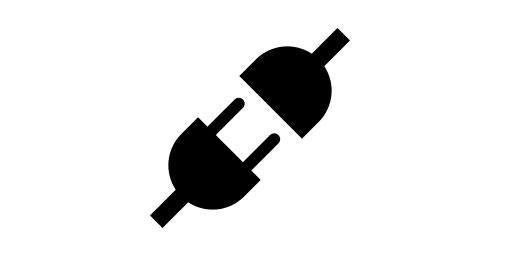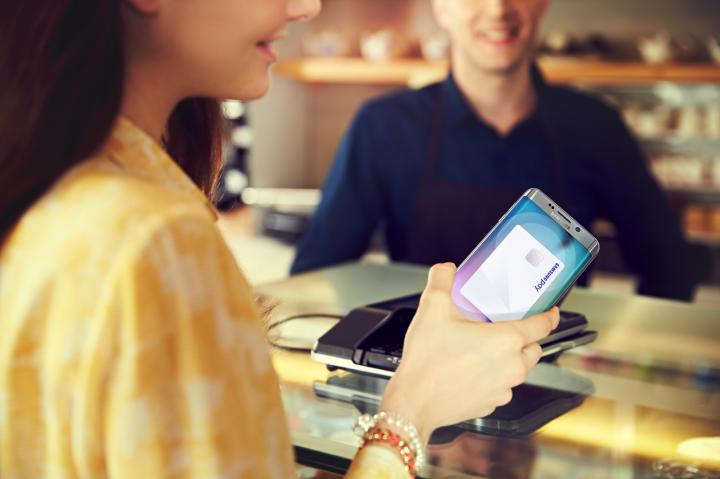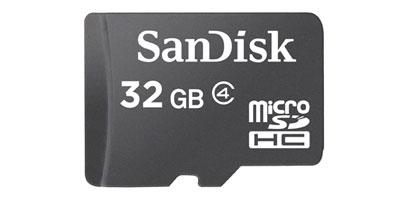If you want to get a new Nexus or a new Samsung Galaxy flagship, then by all means, go ahead. These top of the line Android smartphones certainly have a lot to offer.
But the truth of the matter is that you can get a cheaper Android phone with decent hardware specs and still have a great user experience. A more affordable alternative is sometimes better than an expensive flagship. Here’s why.
1. You won’t spend a ton of money

This part is obvious. Flagships are expensive and they will put a big dent in your budget. If money is an issue, if you don’t feel like spending a lot on a flagship, if you don’t want to go into debt to get an expensive phone, then a cheap Android is the ideal solution.
Here are some ideas:
2. You won’t plug it in as often (probably)

I remember my old Nokia 3310; its battery lasted 4 to 5 days. Nowadays, you’re lucky if you can squeeze a full day of use out of your smartphone. Large displays with insane resolutions, powerful processors, and various built-in sensors, they’ll drain your battery in no time and you'll constantly have to recharge them. That’s why flagships come with things like Ultra Power Saving Mode, Doze and App Standby, and wireless charging.
Cheaper phones have lower-resolution displays and less powerful processors that don’t require as much power to run. Consequently, their battery may last longer. I say may, because it all depends on your battery’s capacity and on how much you use your phone. Images won’t be as crisp and apps won’t launch as fast on a cheaper Android. But if you don’t run processor-hungry apps and you use your Android just for social networking anyway, that won’t really matter.
3. Bigger isn’t always better

When Samsung released the Galaxy S2, everyone was comparing it to the iPhone and complaining that it’s too big. True, the S2’s 4.7-inch display is quite large - but not too large, not by by today’s standards. Year after year, manufacturers rolled smartphones with bigger and bigger displays. We got to a point where phablets are the norm.
Take Samsung’s and Google’s newest devices for example. The Galaxy Note 5 and the Galaxy S6 Edge+ both have a 5.7-inch display. Google’s new Nexus 5X and Nexus 6P have 5.2-inch and a 5.7-inch display respectively. Even Apple’s latest phones are huge. The iPhone 6S has a 4.7-inch display and the 6S Plus has a 5.5-inch display.
Bigger isn’t always better and if you prefer smaller displays, you’re in luck! Most cheap Androids come with smaller displays. This means they’re easier to hold (especially with just one hand), they fit better in your pocket, and you are less likely to bend, crack, or drop them.
4. You can stick a microSD card in it

Galaxy phones used to come with a microSD slot – until the Galaxy S6, when Samsung decided to give its devices a premium feel and got rid of the microSD slot. Google’s Nexus devices never come with a MicroSD slot. HTC’s M8 and M9 come with a microSD card, but the older M7 did not.
The point I’m trying to make here is that most flagship phones do not have a microSD card. And that’s a bummer if expandable memory is a must have for you. The good news is that most budget phones come with microSD cards. When the phone has 16GB of internal memory or less, being able to insert a 32GB microSD card is a very big deal.
Did you know that there are latest SanDisk microSDXC offers a staggering 200GB of storage space? The downside is that it is a bit pricey.
5. You won’t have a fit when you break it

You saved up, purchased a brand new and expensive flagship, got a case for it, and you’re happy as a clam. But you will inevitably drop your phone, or someone will accidentally sit on it, or someone will spill his drink on it. How will you react when something like that happens? You’ll have a cow!
I know you will, because it happened to me. My dad sat on my phone and cracked it because “I didn’t see it there.” The wife called me while I was carrying some packages for her; because I did not put the packages down, I dropped my phone on the concrete, denting it. I was out for some drinks with a friend, and I put the phone on the table, because it was too large to fit comfortably in my pocket. And wouldn’t you know it, my friend knocked his glass over, drenching my phone.
A cheaper Android phone gives you peace of mind. You’re not going to worry that someone will steal your expensive phone. You won’t have a heart attack when you drop your phone. And if you manage to irreversibly damage your phone, you won’t have to dip into your savings to get a new one.
A few words of warning
Phones that are too cheap are probably not worth it. Take a look at the hardware specs before you make a purchase.
Many budget phones will not get major software updates. You won’t get a major new release such as Android 6.0 Marshmallow.
In related news…
It’s easy to get excited when a new flagship comes out. You’ll want one, even though you don’t really need a new phone.
Here are 5 questions you should ask yourself before you go and ditch your old phone in favor of a new one.
But the truth of the matter is that you can get a cheaper Android phone with decent hardware specs and still have a great user experience. A more affordable alternative is sometimes better than an expensive flagship. Here’s why.
1. You won’t spend a ton of money

This part is obvious. Flagships are expensive and they will put a big dent in your budget. If money is an issue, if you don’t feel like spending a lot on a flagship, if you don’t want to go into debt to get an expensive phone, then a cheap Android is the ideal solution.
Here are some ideas:
- The Moto E which comes with a quad-core processor.
- The Moto G which comes with advanced water resistance.
- The Huawei SnapTo which features a 5-inch HD screen and full GSM/4G LTE network.
- The ASUS ZenFone 2 which has an Intel processor.
- The Alcatel OneTouch Idol 3 which comes as a 5.5-inch and as a 4.7-inch model.
- The ZTE Grand X Max+ that has a large 6-inch display.
- The HTC Desire 626 which has an 8-megapixel rear and 2-megapixel front camera.
2. You won’t plug it in as often (probably)

I remember my old Nokia 3310; its battery lasted 4 to 5 days. Nowadays, you’re lucky if you can squeeze a full day of use out of your smartphone. Large displays with insane resolutions, powerful processors, and various built-in sensors, they’ll drain your battery in no time and you'll constantly have to recharge them. That’s why flagships come with things like Ultra Power Saving Mode, Doze and App Standby, and wireless charging.
Cheaper phones have lower-resolution displays and less powerful processors that don’t require as much power to run. Consequently, their battery may last longer. I say may, because it all depends on your battery’s capacity and on how much you use your phone. Images won’t be as crisp and apps won’t launch as fast on a cheaper Android. But if you don’t run processor-hungry apps and you use your Android just for social networking anyway, that won’t really matter.
3. Bigger isn’t always better

When Samsung released the Galaxy S2, everyone was comparing it to the iPhone and complaining that it’s too big. True, the S2’s 4.7-inch display is quite large - but not too large, not by by today’s standards. Year after year, manufacturers rolled smartphones with bigger and bigger displays. We got to a point where phablets are the norm.
Take Samsung’s and Google’s newest devices for example. The Galaxy Note 5 and the Galaxy S6 Edge+ both have a 5.7-inch display. Google’s new Nexus 5X and Nexus 6P have 5.2-inch and a 5.7-inch display respectively. Even Apple’s latest phones are huge. The iPhone 6S has a 4.7-inch display and the 6S Plus has a 5.5-inch display.
Bigger isn’t always better and if you prefer smaller displays, you’re in luck! Most cheap Androids come with smaller displays. This means they’re easier to hold (especially with just one hand), they fit better in your pocket, and you are less likely to bend, crack, or drop them.
4. You can stick a microSD card in it

Galaxy phones used to come with a microSD slot – until the Galaxy S6, when Samsung decided to give its devices a premium feel and got rid of the microSD slot. Google’s Nexus devices never come with a MicroSD slot. HTC’s M8 and M9 come with a microSD card, but the older M7 did not.
The point I’m trying to make here is that most flagship phones do not have a microSD card. And that’s a bummer if expandable memory is a must have for you. The good news is that most budget phones come with microSD cards. When the phone has 16GB of internal memory or less, being able to insert a 32GB microSD card is a very big deal.
Did you know that there are latest SanDisk microSDXC offers a staggering 200GB of storage space? The downside is that it is a bit pricey.
5. You won’t have a fit when you break it

You saved up, purchased a brand new and expensive flagship, got a case for it, and you’re happy as a clam. But you will inevitably drop your phone, or someone will accidentally sit on it, or someone will spill his drink on it. How will you react when something like that happens? You’ll have a cow!
I know you will, because it happened to me. My dad sat on my phone and cracked it because “I didn’t see it there.” The wife called me while I was carrying some packages for her; because I did not put the packages down, I dropped my phone on the concrete, denting it. I was out for some drinks with a friend, and I put the phone on the table, because it was too large to fit comfortably in my pocket. And wouldn’t you know it, my friend knocked his glass over, drenching my phone.
A cheaper Android phone gives you peace of mind. You’re not going to worry that someone will steal your expensive phone. You won’t have a heart attack when you drop your phone. And if you manage to irreversibly damage your phone, you won’t have to dip into your savings to get a new one.
A few words of warning
Phones that are too cheap are probably not worth it. Take a look at the hardware specs before you make a purchase.
Many budget phones will not get major software updates. You won’t get a major new release such as Android 6.0 Marshmallow.
In related news…
It’s easy to get excited when a new flagship comes out. You’ll want one, even though you don’t really need a new phone.
Here are 5 questions you should ask yourself before you go and ditch your old phone in favor of a new one.

























